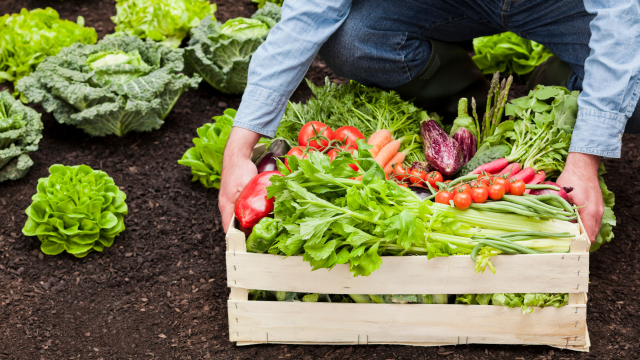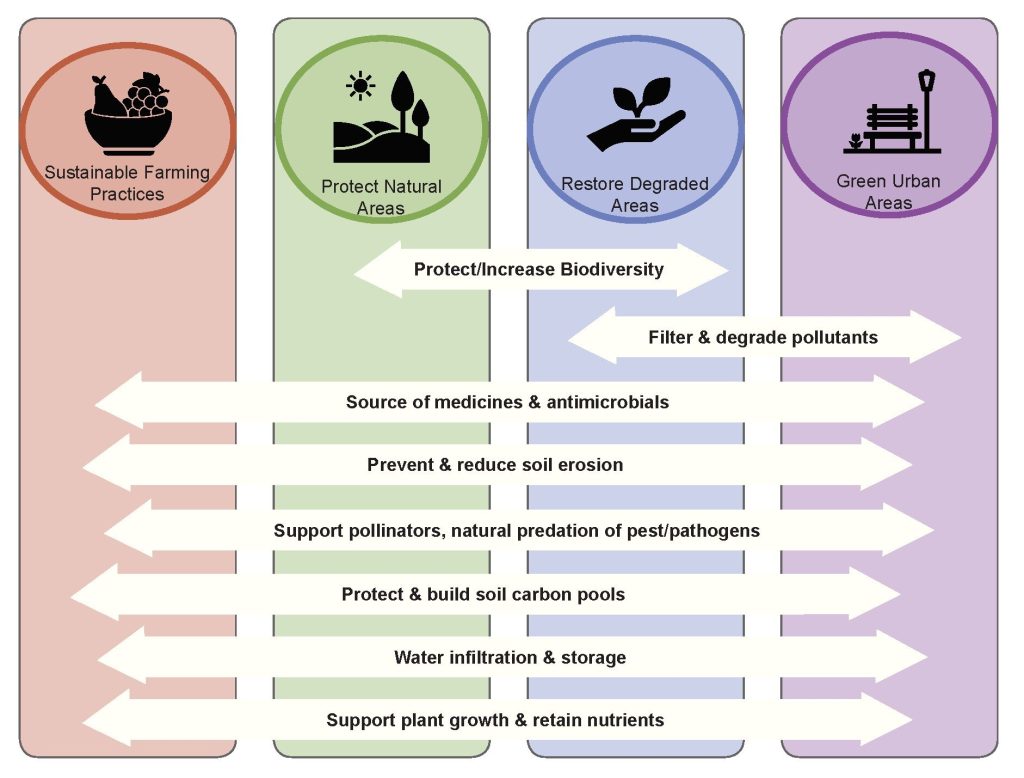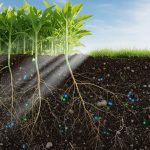Imagine walking through a vibrant farm, where every plant, insect, and animal plays a crucial role in maintaining a perfect balance. This is not just any farm; it’s a sustainable ecosystem thriving on the magic of biodiversity.
But why should you care? Because biodiversity is the secret ingredient that keeps our food systems resilient and healthy. It protects crops from pests, enriches the soil, and even helps combat climate change. If you’re passionate about the future of food and farming, understanding the role of biodiversity is key.
Dive deeper into this article to discover how biodiversity is not just an ecological buzzword but a vital component for sustainable farming. Whether you’re a farmer, a food enthusiast, or someone who simply cares about the planet, this is your chance to learn how you can contribute to a more sustainable future.
Importance Of Biodiversity
Biodiversity enhances sustainable farm ecosystems by supporting soil health, pest control, and pollination. Diverse species improve resilience to climate change and disease. This natural balance reduces the need for chemical inputs, fostering healthier and more productive farms.
The importance of biodiversity in sustainable farm ecosystems is immense. Biodiversity, or the variety of life in a particular habitat, plays a critical role in maintaining the balance and health of farm ecosystems. It ensures resilience against pests, diseases, and environmental changes. When you focus on enhancing biodiversity on your farm, you create a vibrant ecosystem that supports sustainable agricultural practices.What Is Biodiversity?
Understanding biodiversity is the first step toward appreciating its importance. Biodiversity encompasses the different species of plants, animals, and microorganisms that coexist within a given environment. Each organism plays a unique role, contributing to the overall health and functionality of the ecosystem. Having diverse species means your farm can withstand challenges better. If one species is affected by a disease, others can step in to fill the gap. This natural balance reduces the need for chemical interventions and supports organic farming methods.Benefits Of Biodiversity In Pest Management
One of the most practical benefits of biodiversity is natural pest control. Diverse ecosystems include predators that keep pest populations in check. Ladybugs, for instance, are known to consume aphids, protecting your crops from infestation. This natural pest management saves you money and time. It minimizes reliance on chemical pesticides, which can harm the environment. By encouraging beneficial insects and plants, you create a self-sustaining ecosystem.Enhancing Soil Health
Healthy soil is the foundation of any farm. Biodiversity contributes to soil health by promoting various biological processes. Different plant species enhance nutrient cycling and improve soil structure. When I first diversified my crops, I noticed the soil retained moisture better and required less fertilizer. The varied root systems improved aeration and decreased erosion. These changes led to healthier crops and increased yields.Promoting Pollination
Pollinators like bees and butterflies are crucial to farm ecosystems. Biodiversity ensures a steady supply of these pollinators, which is essential for crop production. Planting a variety of flowering plants attracts pollinators and boosts their population. Consider adding native plants to your farm. This simple step can significantly increase pollinator activity, resulting in better crop yields. The presence of diverse species supports the lifecycle of these vital organisms.Creating Resilient Ecosystems
Resilience is key to sustainability. Biodiversity makes farm ecosystems more adaptable to changes such as climate shifts or extreme weather events. A diverse ecosystem can recover more quickly from disturbances. Imagine the peace of mind knowing your farm is less vulnerable to unpredictable conditions. By fostering biodiversity, you build a robust system that can thrive despite challenges. Are you ready to embrace this sustainable approach on your farm? Incorporating biodiversity into your farm ecosystem is not just an option; it’s a necessity. Start small by introducing different plant species or encouraging beneficial insects. Each step you take is a stride toward a healthier, more sustainable future.
Biodiversity And Ecosystem Services
Biodiversity plays a key role in sustainable farm ecosystems. It ensures the proper functioning of ecosystem services. These services are essential for both agriculture and the environment. By supporting biodiversity, farmers can maintain soil fertility, pest control, and crop pollination. This creates a balance that benefits both nature and agriculture.
What Are Ecosystem Services?
Ecosystem services are the benefits we get from nature. They include clean water, fertile soil, and fresh air. These services are crucial for farming. Without them, growing crops becomes difficult. Biodiversity supports these services by maintaining ecosystem health.
The Role Of Biodiversity In Soil Fertility
Biodiversity improves soil structure and fertility. Different organisms break down organic matter. This process releases nutrients back into the soil. Microorganisms, worms, and insects play a vital role. They make nutrients available to plants. Healthy soil supports crop growth and yield.
Natural Pest Control
Biodiversity helps control pests naturally. Predators like birds and insects reduce pest populations. This reduces the need for chemical pesticides. It keeps the ecosystem balanced and safe. Farmers benefit from fewer pest-related losses.
Pollination And Crop Yield
Many crops rely on pollinators to produce fruit. Bees, butterflies, and other insects help in pollination. Biodiversity ensures a healthy population of pollinators. This leads to better crop yields. Farmers can grow more food with the help of pollinators.
Water Management And Biodiversity
Biodiversity improves water management on farms. Plants and trees help in water absorption. They prevent soil erosion and flooding. This helps maintain water quality. Farms benefit from sustainable water use and reduced damage.
Resilience Against Climate Change
Biodiverse ecosystems are more resilient to climate change. They adapt better to extreme weather conditions. Farmers face fewer losses with diverse ecosystems. Biodiversity acts as a buffer against climate impacts.
Enhancing Biodiversity On Farms
Biodiversity enriches farm ecosystems, supporting sustainable practices. It boosts soil health, controls pests naturally, and enhances pollination. Diverse species create a balanced environment, crucial for long-term farm productivity and resilience.
Enhancing biodiversity on farms is more than just a trend—it’s a game-changer for sustainable agriculture. When I first started my small farm, I noticed how different species interacted. It became clear that a diverse ecosystem wasn’t just beautiful; it was essential for long-term productivity and resilience. As you think about your farm, consider how increasing biodiversity can create a healthier, more sustainable environment.Understanding The Benefits Of Biodiversity
Biodiversity strengthens farm ecosystems. It fosters natural pest control, reducing the need for chemical pesticides. Different species work together, maintaining soil health and enhancing crop yields. Imagine your farm thriving with a variety of plants, insects, and animals—all contributing to a balanced ecosystem.Practical Ways To Enhance Biodiversity
You can add hedgerows or wildflower strips to attract beneficial insects. Consider planting a variety of crops instead of monoculture. This approach can protect against diseases and pests. Have you thought about rotating crops? It’s a simple strategy that can enrich soil and prevent depletion.Embracing Native Species
Native plants and animals are adapted to local conditions. They require less maintenance and provide habitat for local wildlife. By welcoming native species, you’re supporting a natural balance. Have you ever noticed how birds and bees are drawn to native plants? They can be your allies in maintaining farm health.Creating Habitats For Wildlife
Think about small changes like adding birdhouses or ponds. These can attract birds and amphibians that help control pests. Even simple structures can make a big difference. What if your farm could be a sanctuary for local wildlife? Creating habitats is a step toward a thriving ecosystem.Monitoring And Adapting
Regularly check how changes affect your farm. Biodiversity is dynamic, and your strategies should be too. It’s about observing and learning what works best for your land. Are you ready to adapt and grow with your farm’s ecosystem? Keeping an eye on these interactions can lead to valuable insights. Enhancing biodiversity on farms is an ongoing journey. It’s about making small, thoughtful changes and observing their impact. What steps will you take to foster a diverse and sustainable ecosystem on your farm?

Conclusion
Biodiversity strengthens farm ecosystems. Healthy soil, water, and air thrive together. Plants grow better with diverse species. Insects help pollinate. Birds control pests. These elements create balance. Farmers benefit from sustainable practices. More yields. Less waste. Nature supports farming success.
Protecting biodiversity matters. Future generations depend on it. Small actions make a big difference. Plant trees. Save seeds. Encourage wildlife. Biodiverse farms sustain life. They nurture the earth. They provide food. They offer hope. Embrace biodiversity for lasting change. Sustainable farming starts with nature.
It’s vital for our planet. Together, we can make it happen.



